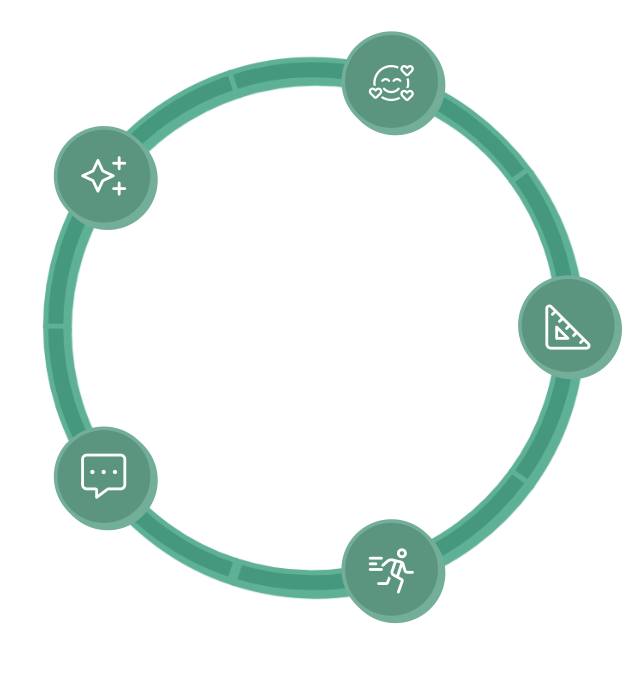What Are the Five Brain Domains?

Overview
Your child's brain and body run five interconnected systems—sensory, emotional, executive, motor, and communication. Understanding how they work together helps everyday challenges start to make sense.
Why the Five Domains Matter
Most of us were taught to see behavior as the whole story. But behavior is a surface summary of five deeper systems that constantly interact. Each domain plays a different role—and when one works overtime, the others feel it.
These domains don't replace diagnosis or personality. They give parents a practical lens for noticing what's happening underneath the visible behavior, so you can support what your child's brain and body need.
The Five Domains at a Glance
1️⃣ Sensory Processing—How Information Gets In
This system filters and organizes everything the body notices: light, sound, texture, movement, temperature, social energy. When sensory input overwhelms or under-feeds the system, regulation becomes hard. You'll see it in covering ears, constant motion, or checking out.
Understanding this domain helps you build environments that fit your child's nervous system instead of fighting it.
2️⃣ Emotional Regulation—How Feelings Stay Manageable
This domain manages stress and safety signals. It decides whether the moment feels calm or threatening. When emotional regulation goes offline, tiny frustrations feel huge.
Supporting it looks less like "stop crying" and more like co-regulating—helping your child borrow your calm until their own returns.
3️⃣ Executive Function—How the Brain Manages Tasks
Often called the brain's management system, this domain handles planning, remembering, shifting between ideas, and self-monitoring. When it's overloaded, you'll see forgetfulness, rigidity, or difficulty starting tasks.
Structure, visual supports, and compassionate scaffolds lighten the load.
4️⃣ Motor Planning and Coordination—How the Body Carries Out Ideas
This domain translates thought into movement: writing letters, tying shoes, navigating a crowded hallway. When motor planning struggles, tasks look careless or slow even when effort is high.
Extra time, repetition, and movement breaks help the brain-body connection sync up.
5️⃣ Communication—How Connection Happens
Communication isn't just words. It's tone, facial expression, gesture, and timing. This domain depends on the other four: when sensory load is high or emotions spike, access to language shrinks.
Silence or scripts aren't defiance—they're how the system conserves energy. Meeting kids where they are keeps connection intact while language catches up.
How They Work Together
These systems rarely act alone. A bright grocery store (Sensory) triggers stress (Emotion) that clogs working memory (Executive), so motor control (Motor) falters and words (Communication) vanish.
When you see it as five interacting domains instead of one meltdown, you know where to adjust the environment instead of just correcting the behavior.
Where to Start
Notice which domain hits capacity first. That's your entry point. Then adjust the environment—lighting, pacing, transitions—to restore balance.
Small changes make space for the other systems to recover. And when you share this language with teachers and caregivers, everyone starts seeing the same patterns you do.
The goal isn't to master every system. It's to notice how they interact. That curiosity turns overwhelm into observation.
Key Takeaways
- Behavior is a snapshot of five interacting brain systems
- Each domain affects and supports the others
- When one is maxed out, the rest struggle to keep up
- Observing domains reveals what's actionable
Want a visual guide for quick reference?
Little Brains & Bodies
- Barbara Hubert, PhD
